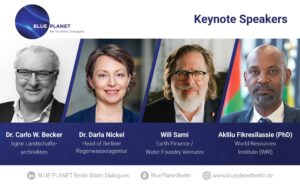SAF optimisation data shared at wastewater conference

Portsmouth University PhD student Ash Lawrence conducting sample preparation. (Image source: WPL Ltd.)
WPL’s technical director Andrew Baird and Ashley Lawrence, PhD student at Portsmouth University, will explain how enhancement of the air and power dynamic associated with ammonia removal in submerged aerated filter (SAF) systems, can deliver significant cost savings.
SAF treatment is traditionally viewed as a high cost process due to the energy requirement in delivering high volumes of air and is generally not considered for larger schemes. Adequate oxygen is essential to ensure that bacteria in the wastewater does not break down odour-free compounds into odorous compounds.
Data featured in the presentation, which takes place on day-two of the virtual event, comes from an ongoing programme of study at Southern Water’s Petersfield wastewater treatment plant. It shows that precise control of the process means SAFs can biologically remove nutrients much more efficiently.
Biofilm formation on specific media primarily depends on the mass transport of nutrients across their surfaces and their subsequent conversion to odour-free compounds through aeration.
Varying the aeration rate affects the movement of neutrally buoyant media, oxygen transfer rates, flow conditions and the way biomass adheres to and shears off surfaces. This can significantly reduce power consumption per person equivalent treated.
Excessive or inadequate aeration can lead to operational problems for the treatment process including a high sludge volume index (SVI) resulting from biofilm and floc breakup or ineffective treatment of ammonia during high loading of the plant.
“These are interim results from our study,” said Baird. “We are seeking to define the actual performance parameters for SAF treatment in various applications, and at different scales, with the aim of determining precise design criteria for SAF nutrient removal.
“There are actually very few papers written on the SAF process and often engineers take information from activated sludge systems and transfer it to SAFs, but the systems are not the same.
“At the heart of WPL’s Hybrid SAF technology are unique flow characteristics that have been patented,” Baird explained. “These ensure an even and continuous flow of nutrients up through the submerged, moving bed.
“The slowly circulating media gradually descend due to their increasing specific gravity from hosting growing biomass. Using gravity in this way, opposed to using energy, results in a significant reduction in power consumption, improving overall efficiency and enabling a reduction in site footprint and a deployment of a more compact unit.”
The European Water & Wastewater Management conference takes place on 13-14 October and is free-to-attend for all UK utility delegates.
Source: WPL Limited







